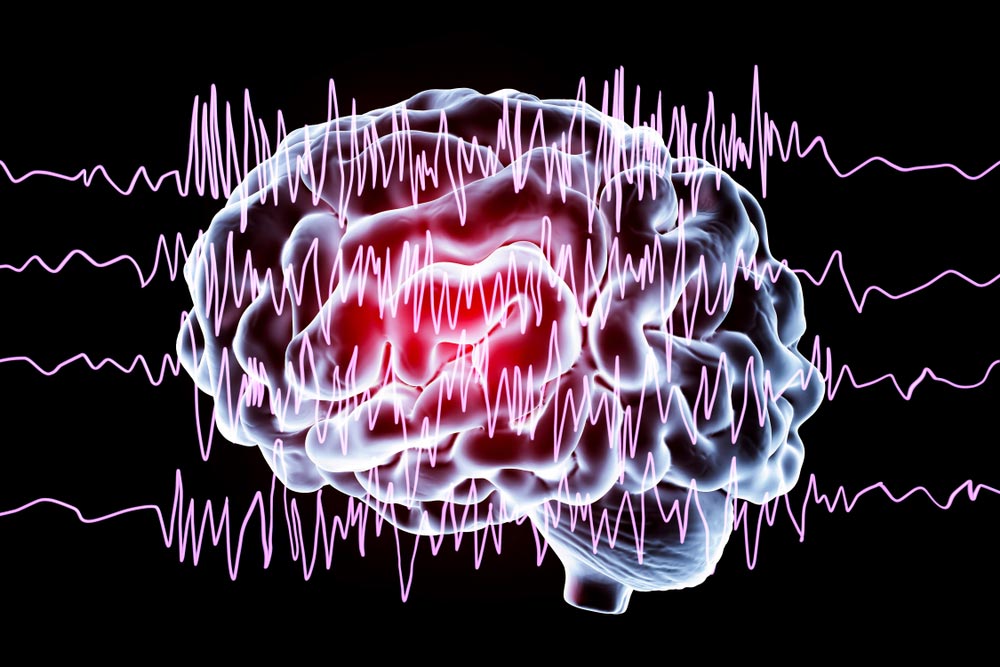
Kateryna Kon / Shutterstock.com
If you have a seizure disorder, you’ve likely known since you were a child. However, when you head to college you may find yourself meeting new people (friends, roommates, or classmates) with this condition. Find out what you need to know in order to keep everyone safe.
What is a seizure? What’s the difference between a seizure and a seizure disorder?
A seizure is a surge of electrical activity in the brain. A seizure disorder (epilepsy) may be diagnosed if someone has at least two unprovoked seizures.
Are there different types of seizures?
Yes, there are a few different types of seizures:
- Focal Onset: These used to be called partial seizures, but a new classification system was released in 2017. Focal onset seizures start in one area (or group of cells) on one side of the brain. There are aware and impaired awareness subtypes. In the aware subtype, the person is awake and aware of what is going on. In the impaired awareness subtype, the person is confused or their awareness of their surroundings is affected in some way.
- Generalized Onset: These seizures affect both sides of the brain (or groups of cells on both sides of the brain) at the same time. Most seizures fall under this category.
- Absence: These involve a lapse in awareness, lasting only a few seconds at a time. Someone experiencing an absence seizure may look like they’re staring off into space or daydreaming.
- Atonic: During this type of seizure, the person suddenly loses muscle tone and may go limp. These are also called “drop seizures” since they cause people to fall to the ground.
- Clonic: These seizures are identified by rhythmic jerking movements.
- Myoclonic: These seizures are categorized by brief jerking movements isolated to a single muscle or group of muscles.
- Tonic: This type of seizure causes some or all muscles to suddenly stiffen or tense.
- Tonic-clonic (convulsion): This is the “classic” seizure that most of us think of (formerly called grand-mal). Symptoms include loss of consciousness, stiffened muscles, and jerking movements. These typically last one to three minutes.
- Unknown Onset Seizure: This term is used to describe a seizure when it’s not known how a seizure started, or no one else witnessed it.
What are the symptoms of a seizure?
Symptoms of a seizure may include:
- Muscle spasms
- Limb twitches
- Dizziness
- Loss of consciousness
- Confusion
- Staring
What’s the difference between a provoked and an unprovoked seizure?
A provoked seizure is a single instance that occurs as the result of trauma, low blood sugar, low blood sodium, high fever, or alcohol or drug abuse. Unprovoked seizures seem to occur out of the blue, without evidence of a provoking event.
Is there any way for someone with a seizure disorder to tell when a seizure is coming?
Some people may experience a feeling of déjà vu; changes in their emotional state; racing thoughts; or specific smells, sounds, or tastes before the onset of a seizure, while others will experience more physical symptoms: nausea, numbness, or lightheadedness. Still others will experience no symptoms at all before a seizure occurs.
Although the typical provoking events don’t occur before a seizure in those with epilepsy, certain triggers may make a seizure more likely to happen soon after.
- Specific times of the day
- Poor sleep
- Illness or fever
- Flashing bright lights or patterns
- Alcohol or drug use
- Stress
- Hormonal changes
- Poor eating habits and/or low blood sugar
- Certain foods (including excess caffeine)
- Medications
- Head trauma
What treatment options exist for someone who experiences seizures?
The first step, if you or someone you know is experiencing seizures, is to see a doctor. They may order tests (e.g., an EEG or an MRI) to get more information about the brain.
If you are diagnosed with a seizure disorder, the first treatment option is usually medication. Different medications exist to treat different types of seizures. Aside from medications, surgery, dietary therapies, and devices are also used to treat epilepsy. Your doctor will work to find the best treatment protocol for you.
What can you do to help someone who’s having a seizure?
Once a seizure starts, there’s not much you can do to stop it. The best thing you can do is to make sure the person is in a safe location where they won’t get hurt; this includes moving any sharp objects that may be near them and clearing other people from the area. If the person experiencing a seizure loses consciousness, you can also turn them on their side to keep their airway clear.
Don’t restrain the movements of someone having a seizure; this can cause more injury than would otherwise occur.
Can people with seizure disorders attend college?
Of course! Students with seizure disorders attend college all the time. If you have a seizure disorder and are planning on pursuing higher education, plan to share your medical needs with the institution, and have a medical plan in place for how to respond if a seizure occurs. Roommates, resident assistants, and professors will likely need this information, so be prepared to share it.
-
Why You Should Get a Flu Shot Now
-
The Sleep-College Relationship
-
How Exercise and Exposure to Nature Help You Recover from Addiction
-
Should I Take the Student Health Insurance or Stay on a Parent’s Plan?
-
What Recent Flooding in Louisiana Can Teach You
-
Everything You Need to Know about Mono
-
The Health Risks of Hookah and E-Cigarettes
-
Why You Should Make an Effort to Drink More Water
-
The Importance of Physical Education and Exercise
-
Finding Help for Alcohol and Drug Addiction: Where to Start and When to Reach Out

